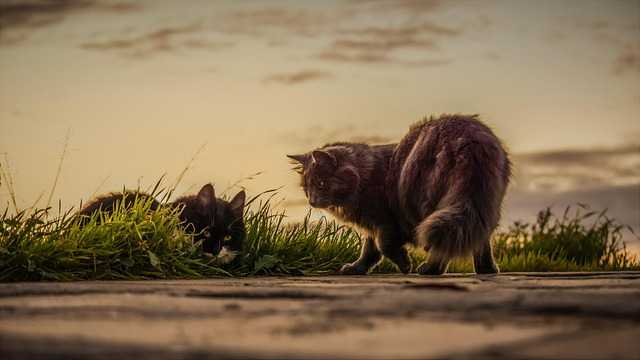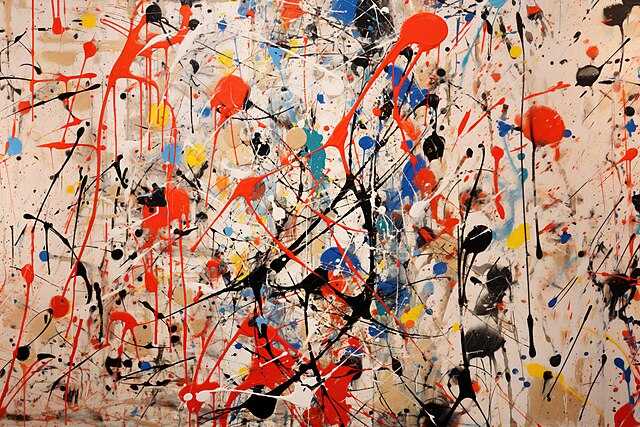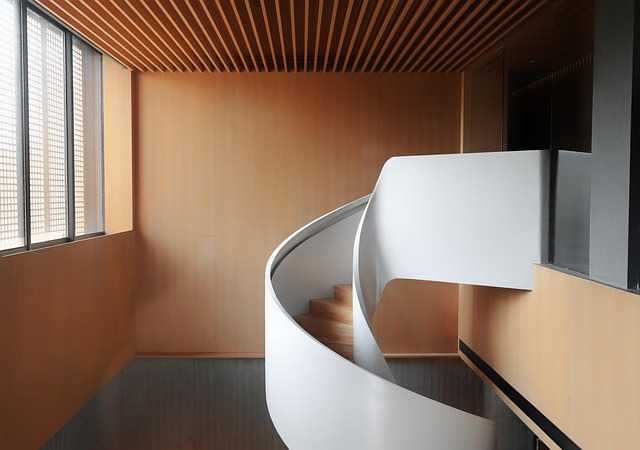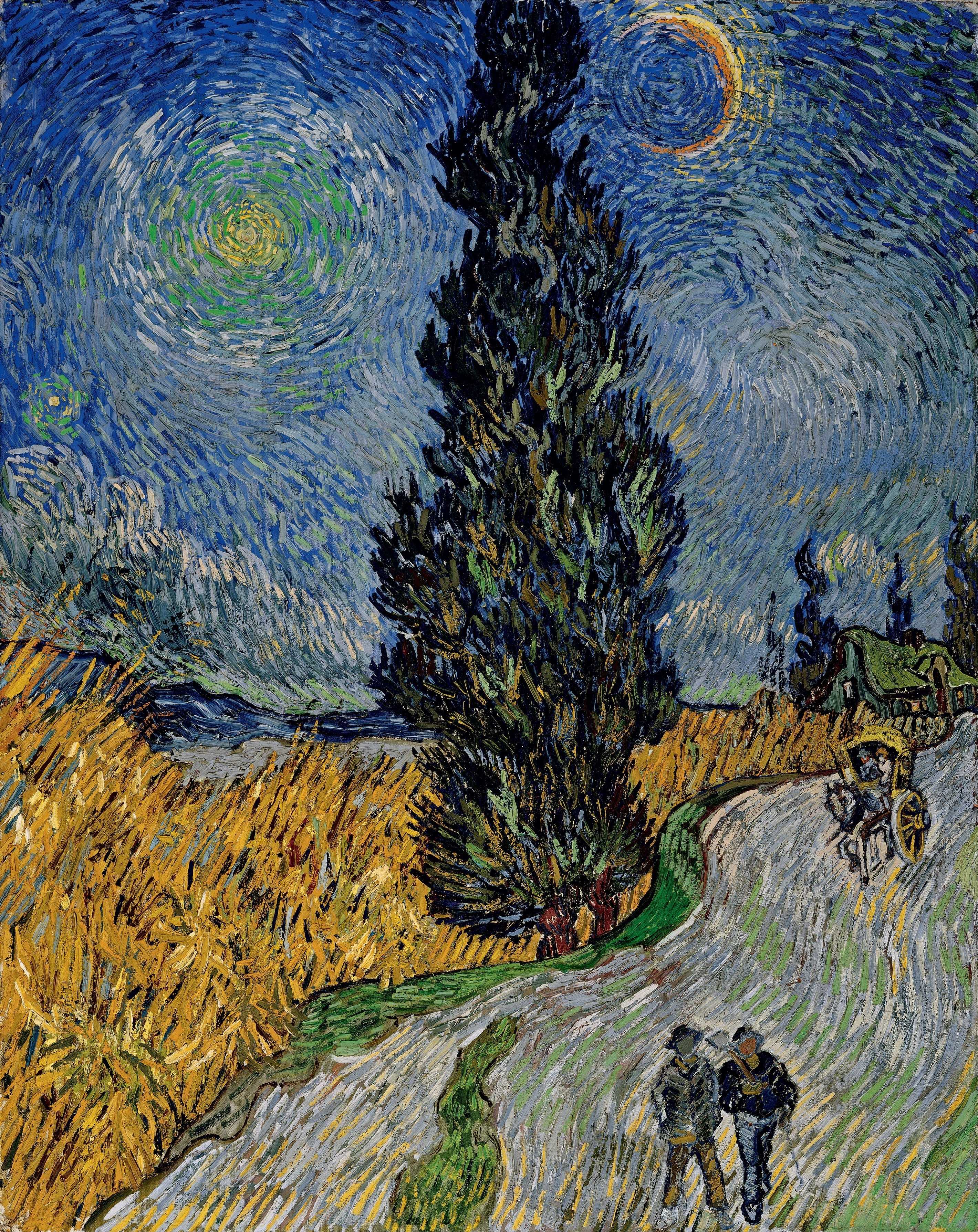Table of Contents
- Exploring the Evolution of Modern Art Styles
- Key Characteristics of Abstract Expressionism
- The Impact of Minimalism on Contemporary Design
- Diving Into the Vibrant World of Street Art
- Tips for Incorporating Modern Art Styles in Your Home Decor
- Q&A
- To Wrap It Up


Exploring the Evolution of Modern Art Styles
The landscape of contemporary artistic expression has undergone significant transformations, reflecting the dynamic interplay between culture, technology, and societal changes. Among the most prominent styles emerging from the early 20th century, Abstract Expressionism stands out, characterized by spontaneous, automatic, or subconscious creation. Artists like Jackson Pollock and Mark Rothko emphasized emotion over representation, allowing viewers to engage with the artwork on a visceral level. This movement paved the way for subsequent styles to experiment with form and material.
In stark contrast, the Minimalism movement sought to strip art down to its essentials, emphasizing simplicity and clarity. Prominent figures like Donald Judd and Agnes Martin focused on geometric forms and monochromatic palettes, creating pieces that invite contemplation and introspection. This style not only challenged traditional notions of artistic complexity but also influenced various design fields, merging art with everyday objects and architecture.
The rise of Postmodernism introduced a playful and sometimes chaotic approach that celebrated diversity and intertextuality. Artists such as Cindy Sherman and Jeff Koons utilized parody and mixed media, blending high and low culture to disrupt established narratives. This era marked a departure from the singular artistic voice, embracing collaboration and the remixing of styles, which continues to resonate in today’s digital art realm.


Key Characteristics of Abstract Expressionism
Abstract Expressionism emerged as a powerful movement in the late 1940s and early 1950s, characterized by a bold use of color and dynamic forms that aim to convey emotional depth without the constraints of representational art. This style emphasizes the artist’s individual expression through spontaneous, gestural brushwork and an emphasis on the act of painting itself. One key aspect of this movement is its focus on process; the creation of the artwork is almost as significant as the finished piece, inviting viewers into a dialogue about the nature of creativity and existence.
The use of color in Abstract Expressionism is particularly striking, with artists like Mark Rothko and Jackson Pollock employing vibrant hues and varied textures to evoke feelings and moods. Unlike traditional color theory that often relies on harmonies and balance, the palette in this movement can be chaotic and expressive. This technique encourages viewers to connect on a visceral level, as the colors speak to the emotions of the artist, inviting interpretations that are personal and subjective.
In addition to color and technique, the scale of Abstract Expressionist works is often monumental, creating an immersive experience for the audience. Large canvases dominate spaces, compelling viewers to engage with the artwork physically and emotionally. This characteristic can be summarized through the following points:
- Monumental Scale: Creates an overwhelming presence.
- Spontaneous Technique: Reflexive and unpremeditated brushwork.
- Emotional Depth: Encourages personal interpretations.
Through these distinctive characteristics, Abstract Expressionism invites both artists and audiences to explore the depths of emotion, validating personal expression over traditional representation in a transformative way.


The Impact of Minimalism on Contemporary Design
The essence of minimalism resonates deeply within contemporary design, stripping away the superfluous and celebrating simplicity. Modern designers have embraced a less-is-more approach, which is characterized by clean lines, open spaces, and an emphasis on functionality. This architectural and design philosophy encourages the use of a limited color palette and materials, thereby allowing individual elements to shine. As a result, spaces are not only visually appealing but also conducive to a serene and focused environment.
Incorporating minimalism into daily life can lead to profound changes in how we perceive our surroundings. This simplification lays the groundwork for both personal and communal spaces, guiding the user experience by reducing visual clutter. Key principles that embody this design approach include:
- Intentionality: Every item has a purpose, contributing to the overall harmony of the space.
- Functionality: Designs prioritize usability without compromising aesthetics.
- Natural Elements: An inclination towards organic materials promotes a sense of calm and connection with nature.
Furniture and decor in minimalist design often feature geometric shapes and unobtrusive patterns. The emphasis on negative space plays a significant role in enhancing visual clarity. Even technology now reflects minimalist ideals, with sleek interfaces prioritizing user experience. A comparison of different design style examples highlights how minimalism stands in contrast to more ornate styles:
| Design Style | Characteristics |
|---|---|
| Minimalism | Clean lines, muted colors, functional forms |
| Maximalism | Bold colors, mixed patterns, layered textures |
| Art Deco | Geometric patterns, lavish ornamentation, luxurious materials |
Diving Into the Vibrant World of Street Art
Street art is a dynamic canvas of creativity that thrives outside conventional gallery walls, transforming urban landscapes into vibrant expressions of human experience. This intriguing art form embodies a wide array of styles, from graffiti tagging to intricate murals, engaging the public in dialogues about culture, politics, and identity. Artists wield spray paint like a brush, using the city as their canvas to convey messages that resonate deeply within their communities.
Among the most captivating aspects of street art is its ability to adapt and evolve. Styles often merge, creating hybrid forms that challenge traditional classifications. Some prominent examples include:
- Stenciling: A method popularized by artists like Banksy, where intricate designs can be reproduced quickly.
- Paste-ups: These involve adhering pre-made artworks to surfaces, often incorporating collage techniques.
- Wheatpasting: A glue technique that gives artworks a textured, layered appearance, inviting closer inspection.
Furthermore, street art serves as a social commentary, facilitating conversations about important global issues. Many artists now harness this power to raise awareness on topics such as climate change, social justice, and mental health. A few notable works exemplifying this trend include:
| Artist | Work | Message |
|---|---|---|
| Shepard Fairey | Obey Giant | Consumerism and power dynamics |
| JR | Inside Out Project | Community identity and human connection |
| Bansky | Girl with a Balloon | Hope and innocence |


Tips for Incorporating Modern Art Styles in Your Home Decor
Incorporating modern art styles into your home decor brings a vibrant energy and contemporary touch to your living space. One effective method is to focus on color schemes that resonate with modern art. For example, bold colors like electric blues, radiant yellows, and fiery reds often dominate modern art pieces. Consider using these colors as accents in your furniture or decor accessories, such as cushions, rugs, or vases, to create a visually stimulating balance. Don’t shy away from contrasting hues, as they can enhance the overall aesthetic and create a conversation piece in any room.
Textured wall art and mixed media pieces are also making waves in modern home decor. Adorn your walls with large canvas paintings or three-dimensional art installations that capture attention and spark interest. Incorporate art that utilizes materials like wood, metal, or fabric to add depth and dimension. This can be particularly effective in spaces like living rooms or entryways, where visual impact is essential. Think about hanging pieces at eye level and grouping smaller artworks together to create a gallery wall that showcases your unique taste.
consider the minimalist approach that emphasizes clean lines and simplicity, which is a hallmark of modern art styles. Choose sleek furniture and decor that complements your art rather than competes with it. Use natural materials like wood or stone for furniture, and keep the space uncluttered to allow your chosen artworks to stand out. Pairing minimalist decor with striking art can create a harmonious atmosphere that feels both sophisticated and inviting. Remember, the goal is to curate a space that reflects your personality while celebrating the beauty of modern artistic expression.
Q&A
Q&A: Understanding Modern Art Styles with Examples
Q1: What is modern art, and how does it differ from traditional art? A: Modern art, which emerged in the late 19th and early 20th centuries, represents a significant departure from the traditions of classical art. It embraces experimentation, self-expression, and a break from conventional aesthetics. Unlike traditional art, which often focused on realism and historical themes, modern art prioritizes abstract concepts, innovative techniques, and a diverse range of perspectives, encouraging personal interpretation.Q2: What are some notable modern art styles and their characteristics? A: Several notable modern art styles have shaped the landscape of art in recent history:
- Fauvism: Characterized by vibrant, non-naturalistic colors and bold brushstrokes, Fauvism emphasizes emotional expression over representational accuracy. Artists like Henri Matisse showcased this style.
- Cubism: Pioneered by Pablo Picasso and Georges Braque, Cubism deconstructs subjects into geometric shapes to represent multiple perspectives simultaneously, challenging traditional notions of form and space.
- Abstract Expressionism: This mid-20th-century movement emphasizes spontaneous and automatic techniques. Artists like Jackson Pollock created large-scale works that prioritized the act of painting itself, often using drips and splatters to convey emotion.
- Surrealism: Aimed at exploring the unconscious mind, Surrealism blends dreamlike scenes with bizarre juxtapositions. Salvador Dalí and René Magritte are key figures in this fascinating style.
- Minimalism: Known for its simplicity and focus on form, Minimalism strips art down to its essentials, often utilizing industrial materials. Artists like Donald Judd and Agnes Martin exemplify this aesthetic.
Q3: Can you provide examples of famous works from these modern art styles? A: Absolutely! Here are a few iconic works representative of the mentioned styles:
- Fauvism: “Woman with a Hat” by Henri Matisse showcases the style’s love for bold color.
- Cubism: “Les Demoiselles d’Avignon” by Pablo Picasso is a groundbreaking work that exemplifies Cubist techniques.
- Abstract Expressionism: Jackson Pollock’s “No. 5, 1948” features his signature drip painting, evoking intense emotion and movement.
- Surrealism: Salvador Dalí’s “The Persistence of Memory” captures a dreamlike quality with its melting clocks and distorted landscapes.
- Minimalism: “Untitled” (1965) by Donald Judd represents the crisp, geometric aesthetic unique to Minimalism.
Q4: How can one begin to appreciate modern art? A: Appreciating modern art often requires openness and curiosity. Start by exploring different styles and learning about the artists behind the works. Visit galleries and museums, engage with art through discussions, or even attend lectures. Try to understand the context in which each piece was created and consider what emotions or ideas the artwork evokes in you personally—there’s often no right or wrong interpretation.
Q5: Is modern art still evolving, and what trends are currently emerging? A: Yes, modern art continues to evolve, reflecting contemporary societal issues and technological advancements. Current trends include digital art and virtual reality experiences that challenge traditional forms. Artists are increasingly using social media as a platform for their work, promoting accessibility and interaction. Movements like street art and eco-art also emphasize cultural commentary and environmental awareness, showing that modern art remains a dynamic and relevant medium.
This Q&A aims to provide a clear and engaging overview of modern art styles, encouraging curious minds to explore the rich landscape of contemporary artistry.
